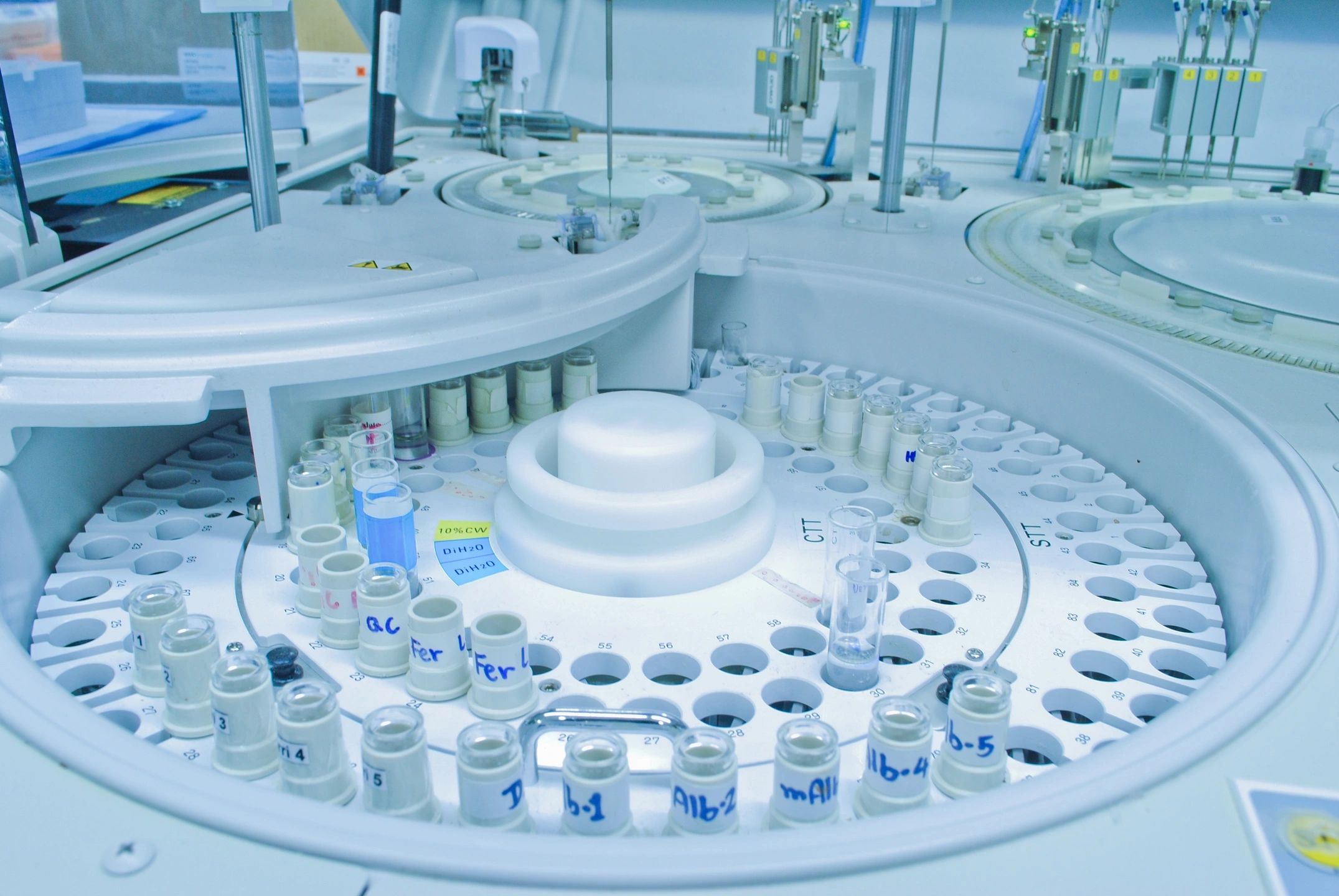
Conversion of waste to value
- Post by: Leo
- January 6, 2021
- Comments off
Conversion of waste to value: Heparin, citrus, tea, coffee, bone, hemp, lithium, and lactose
Works have been accomplished…
-
Synthesize the biosurfactants (e.g., lactose lauryl ester) from sugar featuring low surface and interfacial tensions for food and pharmaceutical applications
-
Improve the sustainability of dairy factory by conversion of major effluent (e.g., whey residues like lactose) to functional food (e.g., prebiotics)
-
Design sustainable electrochemical system to extract anticoagulant agent (e.g., heparin) from porcine intestinal mucosa (pork production line): Overcome the shortcomings of industrial resin Amberlite FPA 98 Cl
-
Fabricate a green bioadsorbent (e.g., grape waste) for the effective separation of biological waste
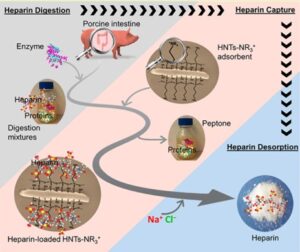
Heparin Recovery
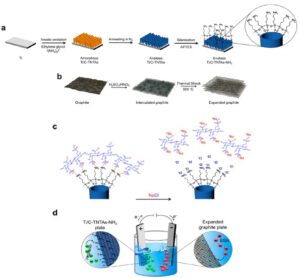
(A) Fabrication and post-modification of the Ti/C−TNTAs−NH2 anode, (B) formation of the expanded graphite cathode, and (C) replacement of HEP molecules adsorbed on the Ti/C−TNTAs−NH2 electrode using Cl− ions present in the aqueous solution. (D) The electrochemical system, including the anodic Ti/C−TNTAs−NH2 plate and cathodic expanded graphite, with the suggested mechanism of the electrosorption separation of negatively charged HEP from the positively charged BSA.
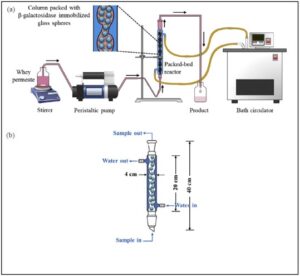
Schematic illustration of the configuration of (A) the experimental setup and (B) the continuous packed-bed reactor for lactose conversion, with dimensions.
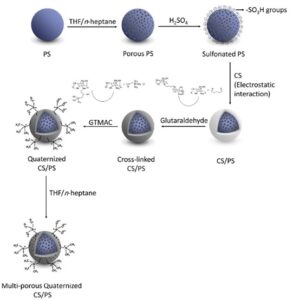
Schematic diagram of the fabrication of multi-porous quaternized-CS/PS microbeads
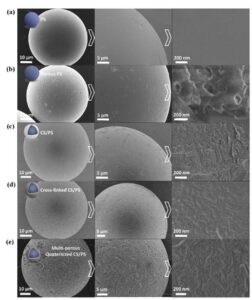
SEM micrographs of (a) PS, (b) porous PS, (c) CS/PS, (d) cross-linked CS/PS, and (e) multi-porous quaternized-CS/PS microbeads. To the right are magnified views, showing the surface morphology of the microbeads.
Peer-reviewed Publications
-
Selective Electrochemical Capture and Release of Heparin Based on Amine Functionalized Carbon/Titanium Dioxide Nanotube Arrays (https://doi.org/10.1021/acsabm.9b00400)
-
Synthesis of lactose lauryl ester in organic solvents using aluminosilicate zeolite as a catalyst (https://doi.org/10.1016/j.foodchem.2018.12.027)
-
One-Pot Synthesis of Cross-Linked Polymer Networks as a Hydrophilic Super-Adsorbent for Efficient Recovery of Heparin (https://doi.org/10.1021/acsapm.8b00126)\
-
High-Throughput, Green, Low-Cost, and Efficient Recovery of Heparin from a Biological Mixture Using Bio-Originated Magnetic Nanofibers (https://doi.org/10.1021/acssuschemeng.8b04945)
-
Synthesis and characterization of lactose fatty acid ester biosurfactants using free and immobilized lipases in organic solvents (https://doi.org/10.1016/j.foodchem.2018.06.051)
-
Highly efficient recovery of heparin using a green and low-cost quaternary ammonium functionalized halloysite nanotube (https://doi.org/10.1021/acssuschemeng.8b03793)
-
Multi-porous quaternized chitosan/polystyrene microbeads for scalable, efficient heparin recovery (https://doi.org/10.1016/j.cej.2018.04.099)
-
Magnetic dendritic halloysite nanotube for highly selective recovery of heparin digested from porcine intestinal mucosa (https://doi.org/10.1021/acssuschemeng.8b03188)
-
Production of galacto-oligosaccharides from whey permeate using β-galactosidase immobilized on functionalized glass beads (10.1016/j.foodchem.2018.01.068)
-
Highly water-dispersible and antibacterial magnetic clay nanotubes functionalized with polyelectrolyte brushes: high adsorption capacity and selectivity toward heparin in batch (10.1039/C8GC02662A)
Categories: